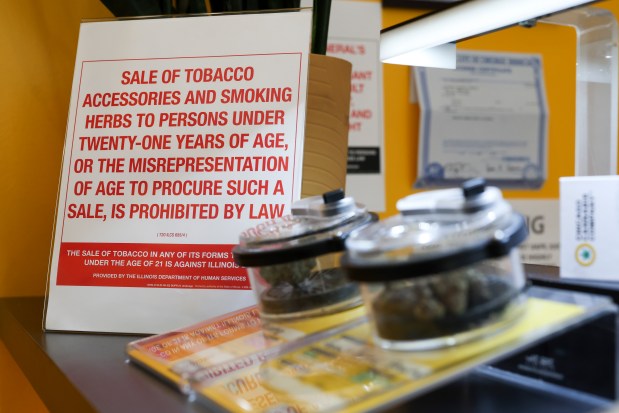Since the city’s consent decree was entered more than six years ago, the independent monitoring team has often stressed that the Chicago Police Department must bolster its data collection and analysis efforts.
How often officers point their weapons and use force, how they are trained, when and where they are deployed are just a few of the thousands of data points that CPD generates every single day.
The new monitor’s report, made public Friday, heaped praise on the department’s consent-decree adherence between July 1 – Dec. 31, 2024, during which time the city hosted the 2024 Democratic National Convention. The report found the police department had achieved some level of compliance with more than 90% of the consent decree’s mandates, though the extent varies by category.
“It’s important for everyone to understand that we’re not rushing. We want to get this right,” CPD Superintendent Larry Snelling said in an interview with the Tribune this week. “We want to make sure that it’s done the right way, but the progress that we’re seeing right now is a result of everybody digging in and working really hard to get this over the line, because it’s in the best interest of all of our officers. It’s in the best interest of the entire city of Chicago.”
The monitoring team pointed to progress in the department’s data-collection practices, and noted that the department’s long-awaited “workforce allocation study” is fully underway.
“The CPD has made significant strides toward implementing various Consent Decree requirements, which has paid dividends in achieving Consent Decree compliance,” the monitoring team said. “It is our hope that the City and the CPD maintain this momentum and continue to build on these successes.”
The monitoring team, led by former federal prosecutor Maggie Hickey, found the Police Department was in full compliance with 16% of the consent decree, while secondary compliance was reached in 42% of monitorable paragraphs. CPD reached preliminary compliance in 34% of consent decree paragraphs, and the other 7% of the consent decree paragraphs had not reached any level of compliance.
Also highlighted were recent disclosures by CPD’s Tactical Review and Evaluation Division that the city’s cops are more frequently documenting use-of-force incidents.
Snelling said the increase in submitted Tactical Response Reports — “TRRs” — was likely due to CPD officers more closely adhering to department standards.
“Sometimes people read these reports (and) they think there’s an increase in uses of force. No, there’s just an increase in officers who are reporting incidents, and they’re doing it just to make sure that they’re following the rules,” Snelling said.
“Some of those may not be cases where there was like an extreme amount of force used, but we have moved away from not doing TR reports for something that is a basic control hold,” he said. “So now where you think you see an increase in uses of force, you just see documentation where we never saw it before.”
A consent-decree status hearing was held last week, during which CPD’s executive director of constitutional policing and reform, Allyson Clark-Henson, laid out the department’s multi-year plan for “organizational excellence.”
The four pillars of the plan are building and supporting CPD’s workforce, fostering community trust, enhancing community safety and bolstering CPD’s organizational infrastructure.
Both Snelling and Clark-Henson credited a collaborative approach among the city, CPD, independent monitoring team and Office of the Illinois Attorney General for the uptick in overall consent-decree compliance reflected in the monitoring team’s most recent report.
Clark-Henson told the Tribune that the firm contracted to conduct the workforce allocation study had already interviewed about 150 CPD officers across all ranks. The study, which will be used to determine how many cops are assigned and where, is expected to be concluded by the end of 2025.



